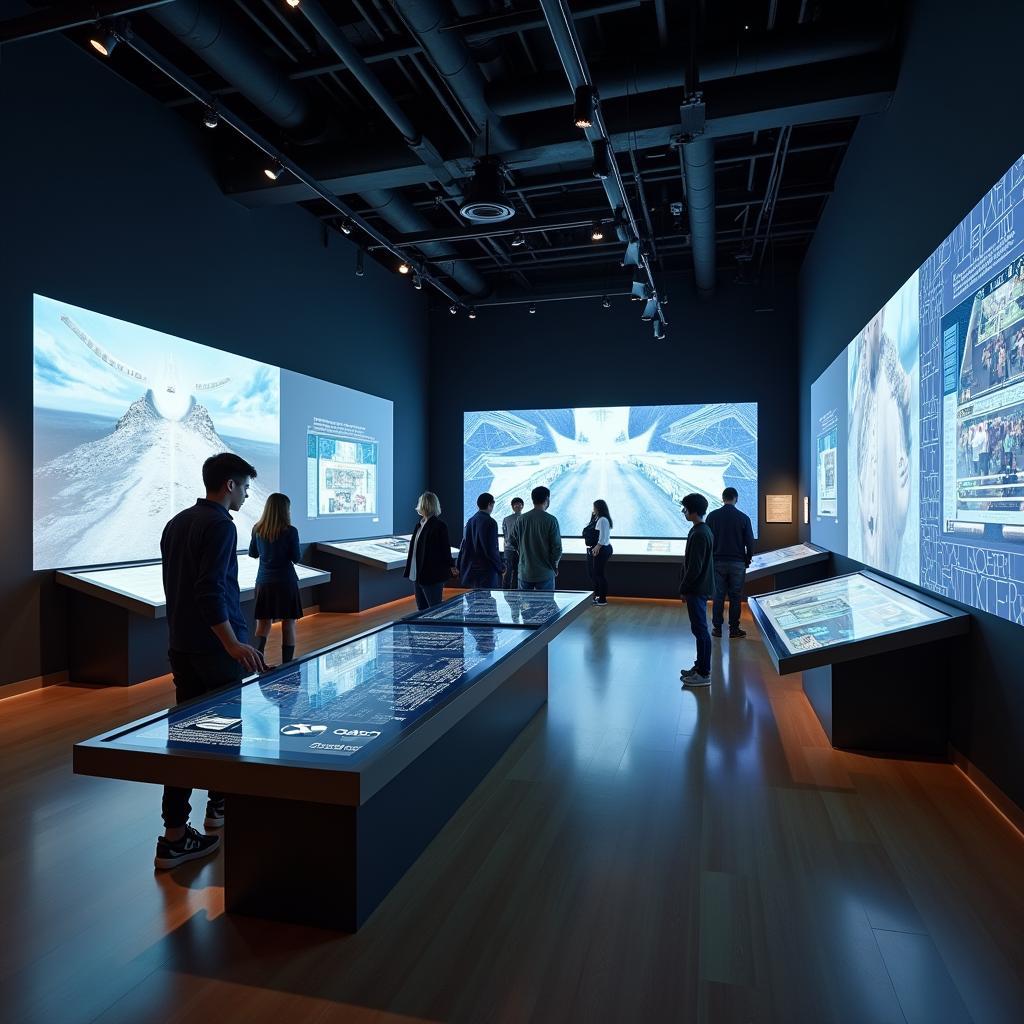Learning to effectively describe a museum exhibit is a valuable skill for the IELTS Speaking test, as questions about museums and cultural experiences frequently appear. Let’s explore how to craft impressive responses that can help you achieve a higher band score in your speaking assessment.
Similar to describe an object you find particularly beautiful, this topic requires detailed observation and precise language use.
Part 1: Introduction and Interview Questions
Common questions you might encounter:
- Do you often visit museums?
- What types of museums do you prefer?
- Do you think museums are important for education?
Sample answer (Band 8-9):
“I make it a point to visit museums whenever I travel to new cities. I’m particularly drawn to natural history museums because they offer fascinating insights into our planet’s past. Museums are absolutely essential for education as they provide hands-on learning experiences that textbooks simply cannot match.”
Part 2: Cue Card
Your task is to describe a museum exhibit that you enjoyed. You should say:
- What the exhibit was about
- Where and when you saw it
- What you learned from it
- And explain why you found it interesting
For those interested in describe a piece of art that inspired you, this response structure can be adapted accordingly.
Sample Answer (Band 8-9):
“I’d like to tell you about an absolutely remarkable exhibit I saw at the British Museum last summer. It was the ancient Egyptian mummy collection, which left an indelible impression on me.
The exhibit masterfully showcased several well-preserved mummies, along with their elaborately decorated sarcophagi. What particularly captivated me was the intricate detail of the hieroglyphics and the fascinating insights into ancient Egyptian burial practices.
I learned extensively about their mummification process, which demonstrated remarkable sophistication for their time. The exhibition expertly illustrated how they removed organs and used natron salt to preserve the bodies.
What made it truly fascinating was how it seamlessly connected the past with present-day archaeological techniques. The use of modern CT scanning to reveal what’s inside the mummies without unwrapping them was absolutely mind-blowing.”
Part 3: Discussion Questions
Similar to describe a museum you visited recently, these questions explore broader themes:
Q: How have museums changed in recent years?
A (Band 8-9): “Museums have undergone a dramatic transformation in recent years. They’ve embraced digital technology to create interactive exhibitions and immersive experiences. Many have also shifted their focus from being mere depositories of artifacts to becoming dynamic learning spaces that engage visitors actively.”
Q: What role do museums play in preserving culture?
A (Band 8-9): “Museums play an absolutely crucial role in cultural preservation. They serve as guardians of our collective heritage by not only protecting physical artifacts but also documenting and interpreting the stories behind them. They effectively bridge the gap between past and present generations.”

Key Vocabulary and Expressions
- Intricate detail /ˈɪntrɪkət dɪˈteɪl/ (adj + n): complex and detailed
- Masterfully showcase /ˈmɑːstəfʊli ˈʃəʊkeɪs/ (adv + v): display something in an expert way
- Leave an indelible impression /lɪv ən ɪnˈdeləbl ɪmˈpreʃn/ (idiom): create a lasting memory
- Seamlessly connect /ˈsiːmləsli kəˈnekt/ (adv + v): join together smoothly
- Mind-blowing /maɪnd ˈbləʊɪŋ/ (adj): extremely impressive
As with describe a place where you go to gain inspiration, using these sophisticated expressions can enhance your response significantly.
Examiner’s Tips
- Practice describing exhibits using specific details and sensory language
- Develop a bank of sophisticated vocabulary related to museums and exhibitions
- Structure your response logically with clear transitions
- Include personal reactions and reflections to demonstrate engagement
- Use varied sentence structures and advanced grammar patterns
Remember to maintain eye contact and speak at a natural pace while incorporating these elements into your response.